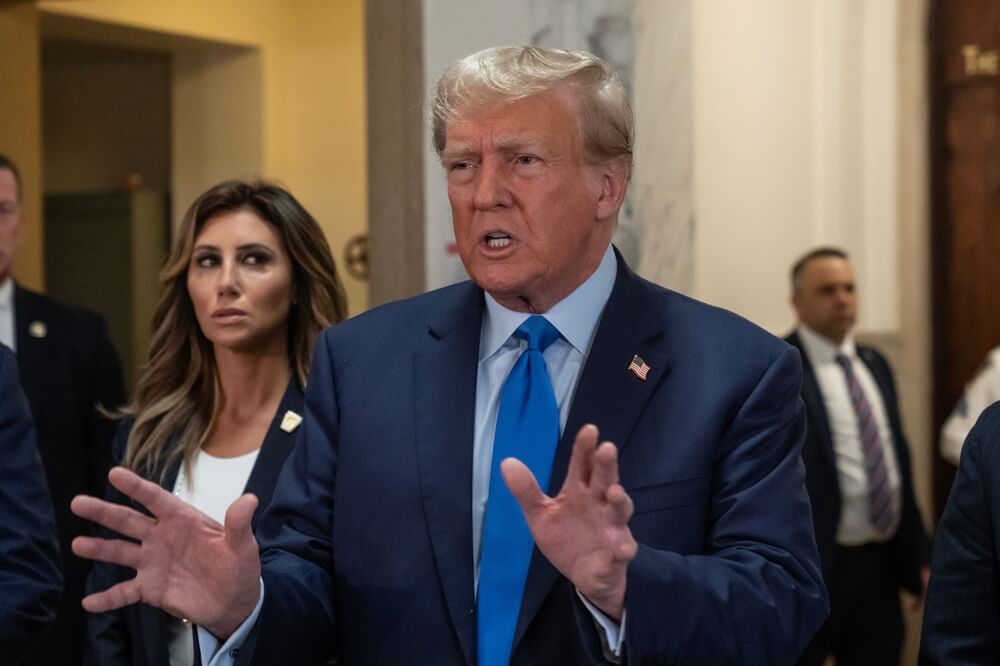After a few weeks of relative calm in financial markets, following the tariff chaos US President Donald Trump unleashed on “Liberation Day” (April 2), Trump’s impatience for perceived results has returned.
Having realized that there is no easy deal to be made vis-à-vis Russia and Ukraine, he is on the cusp of abandoning that effort. He will turn his attention to softer targets: the European Union – which he is now threatening with a 50% tariff – and Harvard University.
One doubts that Trump has considered the costs of these erratic moves, especially as far as the dollar is concerned. In March, I pushed back on the conventional view that tariffs would be bullish for the dollar (by reducing the supply of greenbacks held by foreign countries), because I expected any strengthening effects to be more than offset by the blow to US credibility.
I was right, and yet Trump is now doubling down on the same behavior.
By flipflopping on his tariff “strategy” in mid-April, he briefly encouraged markets to believe that there was a “Trump put” to protect the bond and stock markets.
But now, he has decided, on a whim, that the EU deserves to be hit by an even larger across-the-board tariff than he initially proposed on April 2 – though he has already issued another pronunciamento delaying the 50% levy until July 9.
Trump’s only reason for hiking tariffs on the EU is that he has grown impatient with European trade negotiators. But anyone involved in the long, arduous Brexit negotiations could have told him that the EU likes to dig into the details.
Europeans are highly skilled trade negotiators, and they were never likely to agree to a gimmicky deal that simply allows Trump to claim credit for accomplishing something. After all, that would mean accepting a higher base tariff rate – as the United States has done with the United Kingdom.
How Trump can sustain his aggressive position?
Given the size of the EU economy and US multinationals’ dependence on it, I do not see how Trump can sustain his new, aggressive position.
If he did, the market reaction would probably mirror what we saw in early April, when US stocks cratered while yields on US government bonds spiked (signaling capital flight).
There is zero chance that the German government would just sit on its hands and allow its own auto giants to shift the bulk of their operations to the US
Not only would a 50% tariff on European goods have massive, negative consequences for US companies and consumers; it also would jeopardize one of America’s biggest strengths: services exports. Obviously, the EU’s retaliation would target US tech companies, among others.
Moreover, Trump’s demand that large companies move their manufacturing to the US reflects a focus on traditional industries like automobiles.
But there is zero chance that the German government would just sit on its hands and allow its own auto giants to shift the bulk of their operations to the US.
Trump’s attacks on Harvard
Trump’s attacks on Harvard – and on higher education more broadly – are no less harmful. As Jason Furman notes in the Financial Times, the administration’s latest decision barring Harvard from enrolling foreign students (who tend to pay full tuition) is designed to compromise its financial health.
But the damage would not be confined to one world-leading research institution.
The Boston region is in many ways a mini-Silicon Valley. An entire innovation ecosystem – and American innovation more broadly – could be undermined.
From now on, students, academics, and researchers from around the world will think twice before pursuing professional opportunities in the US
From now on, students, academics, and researchers from around the world will think twice before pursuing professional opportunities in the US.
In my own work on regional economic regeneration in the UK, I have long been inspired by the American northeast. In the economic textbooks of the 1960s and 1970s, this region was presumed to be in irreversible industrial decline, much like northern England and some parts of continental Europe today.
But owing to its world-class universities – notably Harvard, the rest of the Ivy League, and MIT – it has become one of the most dynamic and prosperous parts of the US. Does Trump really want to pull the plug on this engine of growth?
Trump is weakening the long-term fair value of the dollar
That brings us back to the dollar. The Trump administration’s capricious, self-destructive behavior is rapidly undermining both the cyclical and the structural outlook for the greenback.
In thinking about the structural side, I have developed a method of assessing “fair value” (based on John Williamson’s pioneering research into real equilibrium exchange-rate values) that focuses on both relative prices and relative productivity.
What does this measure show us? By undermining the cutting-edge research institutions that drive productivity, and by pursuing policies that raise the price level (to say nothing of the colossal fiscal hole implied by the current tax bill), Trump is weakening the long-term fair value of the dollar.

Donald Trump is raising persistent doubts about US governance, and thus about the dollar’s suitability as the dominant reserve currency.
Making matters worse, by ignoring and undermining the institutions that underpin rule of law – and thus American democracy and the economy – he is raising persistent doubts about US governance, and thus about the dollar’s suitability as the dominant reserve currency.
On the cyclical side, by constantly creating uncertainty and new inflationary risks, Trump is undercutting the US economy’s short-term outlook.
While part of me thinks that the dollar must surely be due for a bounce (given how sharply it has fallen), it is also possible that it already has bounced.
Time will tell whether that was what we witnessed these past few weeks when it stopped falling further.
Jim O’Neill is a former chairman of Goldman Sachs Asset Management and a former UK Treasury minister